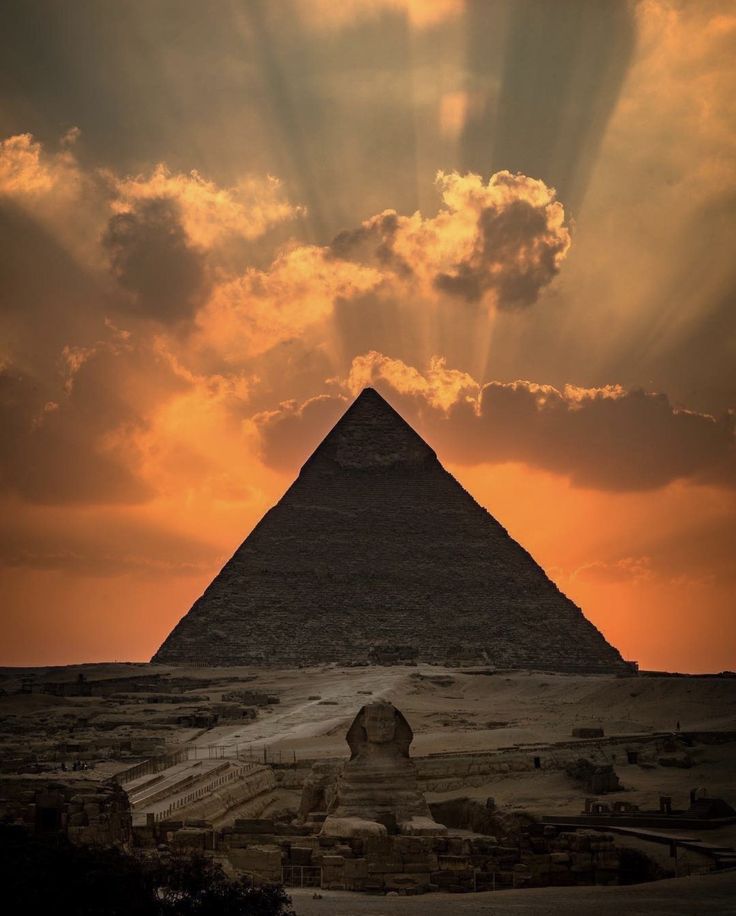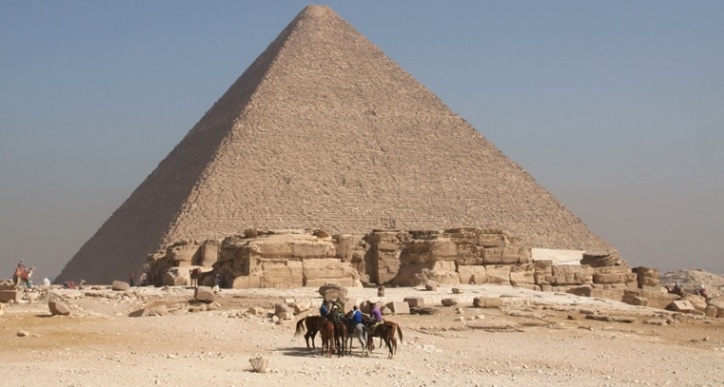Introduction: Egypt’s Most Iconic Treasure
When you think of Egypt, one image immediately comes to mind: a colossal, triangular monument rising from the sands of the Sahara. The Great Pyramid of Giza isn't just Egypt’s most famous landmark—it's a symbol of ancient genius, timeless mystery, and the enduring legacy of a civilization that continues to captivate the world.
Whether you're an adventurer, history buff, or simply someone seeking awe-inspiring sights, visiting the Great Pyramid is a bucket list experience like no other. With Flying Carpet Tours, you'll experience this marvel up close—with expert guidance, local insight, and seamless planning.

What Is the Great Pyramid of Giza?
Standing tall on the Giza Plateau, just outside Cairo, the Great Pyramid is the oldest and largest of the three pyramids built during Egypt’s Fourth Dynasty. Commissioned by Pharaoh Khufu (also known by his Greek name, Cheops), this architectural masterpiece dates back to around 2580 BC.
It was originally 146.6 meters (481 feet) tall and remained the tallest man-made structure on Earth for nearly 4,000 years. Even today, at approximately 138.8 meters (455 feet) due to erosion and missing casing stones, it dominates the desert skyline.
This is more than a tomb—it's a statement. A declaration of power, spirituality, and human capability.
Why You Should Visit the Great Pyramid of Giza
-
The Last Ancient Wonder: It's the only surviving member of the original Seven Wonders of the Ancient World.
-
Engineering Enigma: Over 2.3 million limestone blocks—each weighing 2.5 to 15 tons—were transported and placed with incredible precision.
-
Perfect Alignment: The pyramid is almost perfectly aligned with the four cardinal points—north, south, east, and west.
-
Unmatched Photo Ops: Whether bathed in golden sunrise or silhouetted against the sunset, the pyramid provides breathtaking views.
-
Mystery & Intrigue: How was it built? Why does it contain hidden chambers? Who really designed it? You'll find yourself drawn deeper with every step.
.jpg)
Architecture and Interior Layout
The Great Pyramid consists of several internal chambers, each playing a role in ancient Egyptian burial rituals:
1. The King’s Chamber
Located near the center of the pyramid, it contains a large granite sarcophagus believed to have held Pharaoh Khufu. The chamber is made of huge granite blocks brought all the way from Aswan.
2. The Queen’s Chamber
This smaller chamber may have served religious or symbolic functions rather than housing a burial. It adds to the enigma of the pyramid’s purpose.
3. The Grand Gallery
A tall and narrow passageway leading to the King’s Chamber. Its corbelled ceiling and acoustics are architectural marvels in themselves.
Visitors can enter the pyramid through a passageway in the north face, but be prepared for narrow tunnels and low ceilings—adventure awaits!
Did You Know? Fun Facts About the Pyramid
-
It was covered in polished white Tura limestone that made it shine like a “jewel” in the sun.
-
Ancient Arab travelers believed it held magical secrets and called it the “Great Light.”
-
Some theories suggest astronomical or spiritual alignments with stars like Orion’s Belt.
How to Visit the Great Pyramid of Giza
Location
The pyramid sits on the Giza Plateau, about 30 minutes by car from downtown Cairo.
Opening Hours
Daily from 8:00 AM to 4:00 PM (winter), and 7:00 AM to 5:00 PM (summer). Get there early to beat the crowds and the heat.
Tickets
There is an entrance fee for the Giza Plateau, plus an additional ticket if you wish to enter the Great Pyramid itself. Local guides and Egyptologists are available on-site.
Photography
Photography is allowed outside and inside the pyramid, but without flash inside. Don’t forget your camera!
Suggested Itinerary: A Full Day at Giza
Morning
-
Start at the Great Pyramid of Giza.
-
Climb inside if you're up for the challenge—it’s a physical but rewarding experience.
Midday
-
Visit the Solar Boat Museum, home to the reconstructed boat that once carried Khufu to eternity.
-
Walk over to Khafre’s Pyramid and Menkaure’s Pyramid.
Afternoon
-
See the Sphinx—the mysterious guardian of the pyramids.
-
Enjoy a local Egyptian lunch nearby in a restaurant with a view of the plateau.
Evening
-
Stay for the Sound & Light Show at the pyramids—an unforgettable storytelling experience under the stars.
Nearby Attractions
-
The Sphinx: Half-lion, half-pharaoh, this colossal statue stands guard near the pyramids.
-
Khafre & Menkaure Pyramids: Explore their smaller but equally fascinating interiors.
-
Giza Plateau Museum: New and impressive, offering a modern look at ancient artifacts.
-
Camel or Horseback Ride: Wander the desert like the ancients did—for epic photos and fun.
Travel Tips
-
Dress comfortably: Lightweight, breathable clothes and a hat.
-
Stay hydrated: Bring water, especially in warmer months.
-
Hire a guide: They bring the stones to life with stories and historical context.
-
Use reliable transport: Flying Carpet Tours offers secure, AC-equipped travel with local drivers.
Why It’s More Than Just a Monument
The Great Pyramid of Giza is not just about what you see—it’s about what you feel. Standing beneath its massive shadow, you’re not just witnessing history; you’re connecting with one of humanity’s greatest achievements.
This pyramid doesn’t just belong to Egypt—it belongs to the world. It’s the ultimate testament to human determination, imagination, and spirit.
Final Thoughts: One Pyramid, A Thousand Stories
You’ve seen the photos. You’ve read the legends. Now it’s time to see it for yourself.
At Flying Carpet Tours, we make sure your journey to the Great Pyramid of Giza is smooth, insightful, and unforgettable. From expert guides to flexible tour packages, we help you go beyond the ordinary.
Explore the legacy of the pharaohs at the Great Pyramid of Giza with Flying Carpet Tours.

